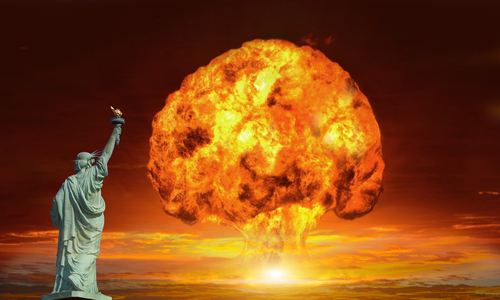
As the drumbeats of potential global conflict echo louder with each passing day, citizens worldwide are left pondering their safety should the unthinkable occur. With the specter of World War III looming over international relations, it becomes imperative to consider which nations might offer sanctuary in such a dire scenario.
The first consideration is Antarctica, a vast continent of ice and snow, far removed from geopolitical strife. Its extreme southern location and challenging climate render it an unlikely target, offering isolation from the world’s turmoils. While not a nation itself, its unique position as a place of scientific exploration and international cooperation could make it a refuge in times of widespread conflict.
10 Safest Countries To Live If #WW3 Breaks Out. ▶https://t.co/Qvr6xyNO1H #PleaseRetweet #Trump #NuclearWar #USA .@survivingthetipTop pic.twitter.com/rgoS0sJiLY
— Breaking News (@FreebieNinja1) December 7, 2016
Moving to more temperate zones, Argentina emerges as a beacon of hope. Despite its historical conflicts, such as the Falklands War, Argentina’s agricultural robustness positions it as a likely survivor of post-nuclear famine. The country’s wheat fields could become invaluable in a world where smoke from a hundred nuclear detonations might block out the sun and devastate global crop production.
Bhutan, with its mountainous terrain and declared neutrality, stands as a testament to peaceful existence. Since joining the United Nations in 1971, Bhutan has maintained a stance of non-involvement in international conflicts, earning it high marks on the Global Peace Index. Its geography alone provides a natural defense, potentially making it a safe haven during global upheaval.
The Deep State are:
-Instigating WW3
-Making biological weapons
-Engaging in child sex-trafficking
-Destroying the economy
-Ignoring the invasion at the border
-Stealing elections
-Brainwashing the planet via propaganda and censorshipTrump has “mean tweets”.
Choose wisely. pic.twitter.com/mlTz5CuWgu
— Clandestine (@WarClandestine) January 20, 2024
Chile, boasting the world’s longest coastline, shares similar agricultural advantages with Argentina. Its diverse crops and natural resources, coupled with its development and infrastructure, suggest resilience in the face of global challenges. Chile’s geographic length could also serve as a strategic advantage, providing multiple locations for refuge within its borders.
For those seeking remoteness, Fiji’s position in the Pacific Ocean makes it a contender for safety. Its distance from major landmasses and a small military force contribute to its high ranking in the Global Peace Index. The island nation’s forests, minerals, and fish stocks could support self-sufficiency in a time of crisis.
Greenland and Iceland, both known for their remote and rugged landscapes, offer political neutrality and natural resources that could sustain their populations independently. Greenland’s sparse population and Iceland’s renewable energy sources are factors that reduce their likelihood of becoming targets in a global conflict.
Switzerland’s long-standing policy of neutrality and its formidable natural defenses have made it synonymous with political safety. Its mountainous terrain and extensive network of nuclear shelters provide a level of preparedness unmatched by many other nations.
In the Pacific, Tuvalu’s low population and remote location might offer obscurity from the chaos of war, though its limited infrastructure could pose challenges for long-term sustainability.
In these uncertain times, the quest for peace and safety is paramount. As nations navigate the treacherous waters of international politics, the aforementioned countries stand out as potential sanctuaries, offering hope that even in the darkest of futures, there will be places where humanity can seek solace and security.












